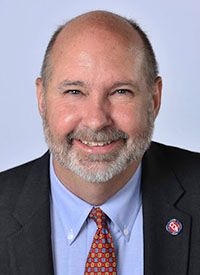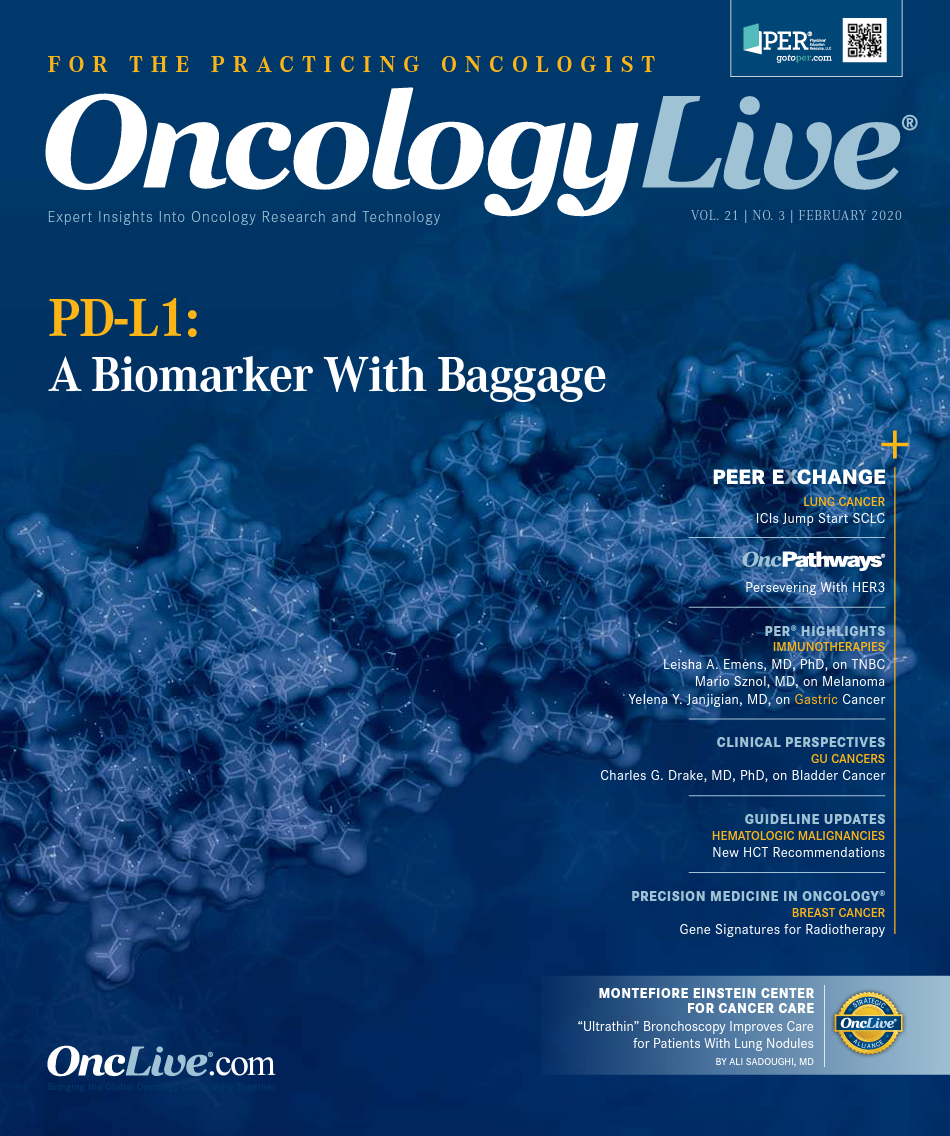Practices Make Surprise Decision on OCM Risk
Many practices enrolled in the Oncology Care Model were expected to drop out of the value-based model rather than take on 2-sided risk, which would entail upside and downside financial exposure.
Robert Gamble, director of strategic practice initiatives for the Community Oncology Alliance

Robert "Bo" Gamble
Many practices enrolled in the Oncology Care Model (OCM) were expected to drop out of the value-based model rather than take on 2-sided risk, which would entail upside and downside financial exposure. Surprisingly, many have opted to stay in and go with the higher-risk stage of enrollment, according to Robert "Bo" Gamble, director of strategic practice initiatives for the Community Oncology Alliance (COA), which has advocated for and counseled practices enrolled in the Centers for Medicare & Medicaid Services (CMS) program since it launched in 2016.
Two-sided risk was going to be mandatory for practices that had not yet earned any performance-based payments (PBPs) in the OCM. PBPs would have signified that they were making progress in the OCM by meeting measures for improved value of care and lower costs. For this group of practices, the alternative to undertaking 2-sided risk would have been a mandatory exit from the program.
“Thirty [percent] to 35% of the people we’ve heard from have not received a performance- based payment, and they are taking 2-sided risk,” Gamble said. He estimated that COA works with 80% of the 175 practices enrolled in the OCM, half of which have not told COA their decision with respect to 2-sided risk. The deadline for deciding was December 3, 2019. The OCM pilot terminates June 30, 2021.
“We don’t have access to all of the results, but based on the discussion I’m seeing, I’m a little surprised that there are many that are staying in, taking 2-sided risk, and they’ve yet to realize a performance-based payment. Gamble said practices that haven’t been doing well and that have opted for downside risk will have to “tighten up” their operations.
Many practices have found it difficult to adapt to CMS’ standards for improvement and quality reporting under the OCM. The model is designed to bundle payments for chemotherapy care and move practices away from fee-for-service payment, which is blamed for driving up the volume of Medicare billings without a commensurate improvement in outcomes.
Gamble cited multiple reasons that practices are making the move to 2-sided care: CMS’ recent modifications to the OCM made it significantly safer to take on 2-sided risk. Further, the recent announcement of a second stage to the OCM, the Oncology Care First model, has given practices confidence in this value program’s continuity. Also, there is anecdotal evidence that, lately, practices have been doing better financially in the OCM, Gamble said.
“Something happened clinically to help improve the picture. We haven’t figured it out. Practices are saying they’re seeing much better performance than before; therefore, they’re feeling comfortable about 2-sided risk,” he said.
Others remain hesitant to go full throttle with the CMS risk schedule.
Barbara McAneny, MD, a managing partner of New Mexico Hematology Consultants, said that after assessing 2-sided risk under the OCM, her group decided not to take it on. The practice has locations in Albuquerque and Gallup. “Not worth it,” she said.
Her group has earned PBPs, making them eligible to stay in the OCM and stick with upside-only risk. It hasn’t been easy to eke out gains, and CMS informed practices that under 2-sided risk, they would face at least 1 year in the OCM with losses. McAneny’s practice’s gains so far would “just balance the 1 year of maximal possible loss,” she said, and require them to “work very hard to break even.”
Gamble said that many practices staying in and accepting 2-sided risk simply do not want to lose all that they have invested in the OCM. Last year, CMS acknowledged the difficulty practices were having with the OCM and created an alternative track that includes less financial risk. It effectively establishes a neutral zone in which practices cannot earn or owe payments to CMS. “They see the safe zone as a fairly big attraction, where they may not make money, but they won’t lose money, either,” Gamble said.
An analysis by the healthcare analytics company Avalere found that of 163 practices enrolled in the OCM, roughly 70% would have to pay money back to CMS under the original 2-sided arrangement. Under the alternative track, 55% or fewer would have to reimburse CMS, according to the analysis.1
Avalere also estimated that more practices would earn performance-based payments under 2-sided risk than 1-sided risk, owing to the structure of the payment formula. In either the original or alternative 2-sided arrangements, slightly more than 30% would earn performance-based payments, Avalere estimated.
“Many practices that could be required to switch to 2-sided risk will likely face recoupment payments to CMS in future performance periods,” Biruk Bekele, an author of the report, wrote. “The decision to drop out of the OCM or switch to the new track will be decided on a practice-by-practice basis and will depend on many factors.”
Gamble said that another thing he finds surprising about practices’ thinking on the OCM is their willingness to buy reinsurance to cover the potential downside. “I think the actual uptake on reinsurance is a lot lower than anticipated,” he said. “I don’t think there’s going to be as much uptake as I thought, and I think it’s going to be the smaller practice, not the bigger ones. The big ones are saying ‘We’ll take the risk and run with it.’”
Practices that take on 2-sided risk will effectively qualify as participating in an advanced alternative payment model, an important goal for CMS. Getting this far offers the potential for a 5% payment bonus, although Gamble said that there are strings attached, and practices won’t find it easy to qualify for the extra money.
Another advantage of accepting 2-sided risk is not having to participate in the Merit-based Incentive Payment System, a more general CMS value-based initiative that is designed to move Medicare providers toward PBPs. In addition, CMS payments to practices under the OCM 2-sided program are less heavily discounted (2.5% or 2.75% instead of 4% in the upside-only risk arrangement).
Bekele B, Grady L, Adelsberg M, Whittam D, Kane R. More than half of all OCM providers could owe CMS money if required to join in 2-sided risk model. Avalere website. avalere.com/press-releases/more-thanhalf- of-all-ocm-providers-could-owe-cms-money-if-required-to-join-in-2- sided-risk-model. Published May 21, 2019. Accessed January 9, 2020.




